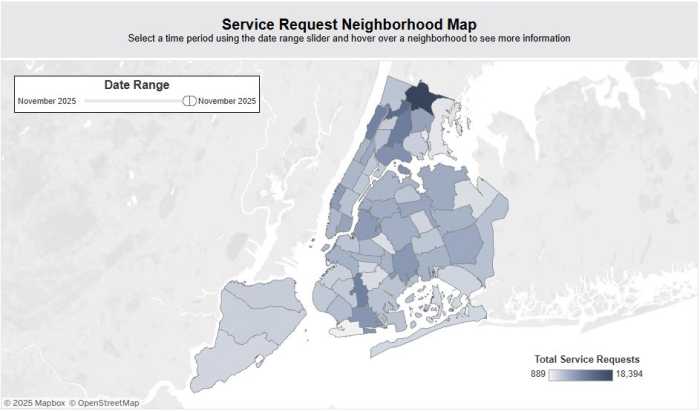Overcrowding at schools in eastern Queens, and a competitive process of securing a seat at some of the most desired ones, were among the concerns expressed to NYC Schools Chancellor David C. Banks at a town hall meeting in Bayside on Monday night.
The chancellor and several of his deputies in attendance took turns answering questions submitted in advance by parents in school district 26, which encompasses Bayside, Oakland Gardens and Douglaston,
As one of the city’s most highly-rated school districts, it is home to several top performing schools. But some say that the popularity of these schools, and the resulting competition of securing a spot, is causing some families to send their children to other districts, instead of staying close to home and attending an inferior school.
Other issues brought up to the chancellor and several of his deputies at the meeting, held inside JHS 74 and streamed virtually, included concerns about city and federal budget cuts, as well as issues pertaining to special needs education programs.
One question, stemming from several PTA Presidents in the district, pointed out that the transition from middle to high school is particularly difficult and that parents lack the support from administrators that they need. With a competitive selection process that involves choice ranking and a randomized lottery, students often end up attending schools that were not their top choices.
Graduating middle school students in the district end up at 80 different high schools across the city, according to the administration. But the vast majority attend high schools such as Francis Lewis, Cardozo and the screened Townsend Harris all within the district.
Members of the administration pointed out that their goal is to uplift every school in the district to a desirable level. It would lessen the overutilization of certain schools based on family preferences.
“The ultimate solution is making sure that every high school whether it’s a high school down the block, in the next neighborhood, even in the next borough, is a good, or at least a solid high school, where you can feel good about your child going there,” said the First Deputy Chancellor, Daniel Weisberg, who was at the meeting. “We’re not there yet.”
Weisberg acknowledged that the high school admissions process is “very stressful,” having gone through it himself with two of his children.
“Folks from around the city, and certainly all around parts of Queens, do what they can to try to find themselves in your district. And it’s been that way for many, many years. When you’re good, everyone wants to be a part of it,” noted Banks, but agreed that less desirable schools in the district need to be improved and marketed better to parents.
And despite overcrowding at these highly desired schools, certain families would prefer to see their children at a school with large class sizes instead of at a less desired school. Banks acknowledged that the district has “real challenges” with class sizes, but an affirmative decision on how to resolve it has not been made yet.
“Families would rather attend an overcrowded, but preferred school, versus an underutilized school that has smaller class sizes,” said one parent in a question that expressed opposition to putting a cap on class sizes. “Although class size reduction is important to all families, the lost opportunity to attend an overcrowded but preferred school is not an acceptable trade off.”
A bill to put a cap on class sizes in districts within cities that have a population of one million or more, introduced by Northeast Queens State Senator John Liu, passed overwhelmingly in Albany in 2022. The chancellor’s administration put together a working group to listen to concerns from parents, educators and their union representatives about the bill that caps high school class sizes at 25 students. They said that those against reducing class sizes are the minority group.
Within the district, there are limited seats in special education programs, on top of a transportation crisis that has left students without proper transportation and a paraprofessional shortage in classrooms. These programs, catering to students on the autism spectrum or with behavioral needs, do not always have open seats in the district where students reside.
But despite acknowledging these issues, deputy chancellor of teaching and learning, Carolyne Quintana, pointed out that the district is currently meeting the needs of 96 percent of students with disabilities, an improvement from last year. They have also seen higher graduation rates for special needs students recently.
Their goal is to ensure that programs are accessible for students residing in the district, instead of having to send them out to other districts and face the transportation shortage.
Despite the city’s tough financial position that has called for cuts to many city agencies, all school districts were spared from cuts this past November. The administration has actually been able to increase the overall contribution to school budgets.
But as federal stimulus funding for school is set to run out at the end of the academic year, that could lead to future cuts for certain programs.
At the town hall, Banks said the hallmark of his chancellorship is openness and accessibility. But some elected officials disagreed.
“Unlike his predecessors, @DOEChancellor seems way more willing and comfortable mixing it up at tonight’s @D26Team CEC town hall. He (and mostly his deputies) fields Qs on admissions, class sizes, and of course, budget cuts,” tweeted eastern Queens Assemblywoman Nily Rozic on X.





































